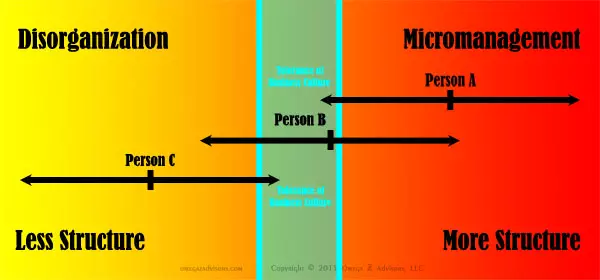How Different People React to Structure in the Workplace
Businesses need structure to grow. Organization, processes, policies and procedures are just some of what this is. How different people react to structure is therefore vital.
What is hard to grasp is just how different this reaction can be. Businesses get rid of outliers thinking they are bad. This is the problem. This costs talent, adaptability and money in the long run.
Recalling Bell Curve is Key
Recalling the bell curve is the key first step to seeing this difference. It says that for any human attribute about a third will have substantially more or less of it than the rest will. For example, about a third of us will be substantially taller or shorter than the rest.
When it comes to how different people react to structure, the bell curve tells us that about a third will react extremely to it. Some will resist strongly. Some will embrace strongly. Businesses jump the gun by seeing both as problems.
How Different People React to Structure
Those who resist structure strongly see it as micromanagement. Those who embrace it strongly see it as justifying only doing their job, nothing more. Businesses will see both as uncooperative, as not being team players.
How different people react to structure not only varies by person but also by the amount of structure. As more of it sets in, more will see it as micromanagement. The less there is, the more will see it as disorganization.

How different people react to structure varies widely. For any level of structure some will consider it micromanagement and others disorganization. This is hard to manage. Businesses will take the easy route and move towards sameness in their cultures rather than diversity. This creates problems long term.
The Challenge
The challenge is seeing these differences as a gradient, not ones with clearly defined lines. As we move either way, more will find the move too much. Seeing clear lines is just easier and simpler. It is basic nature. It also creates problems.
Companies then make it hard for those outside the lines. They let them go or they leave. This is much easier than trying to present structure in a way that works for them.
The sameness of the culture goes up. Its adaptability goes down. Companies then wonder why change is so hard. They got rid of the personalities that might want something different. They kept the ones who like the structure the way it is.



Your last paragraph describes my personal
experience to a T. Those of us looking for change were let go over those who were happy with how things were, therefore they were easiest to control.
Yes, Patty, that happens quite a bit. Complacency sets in too.